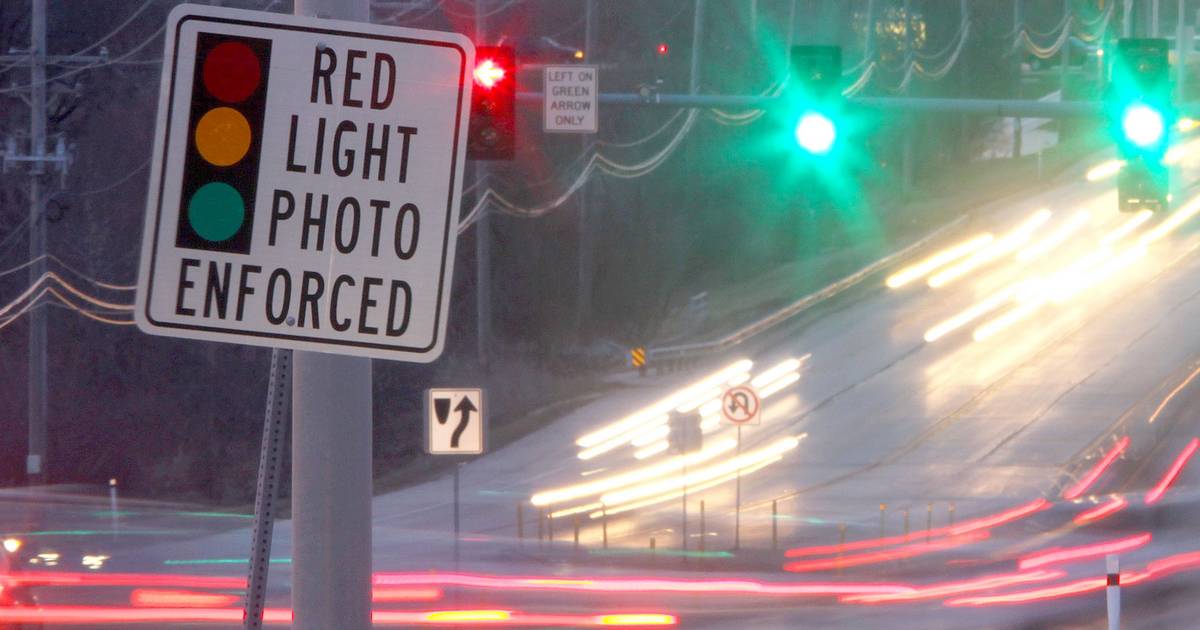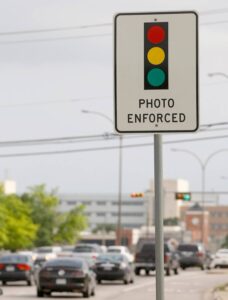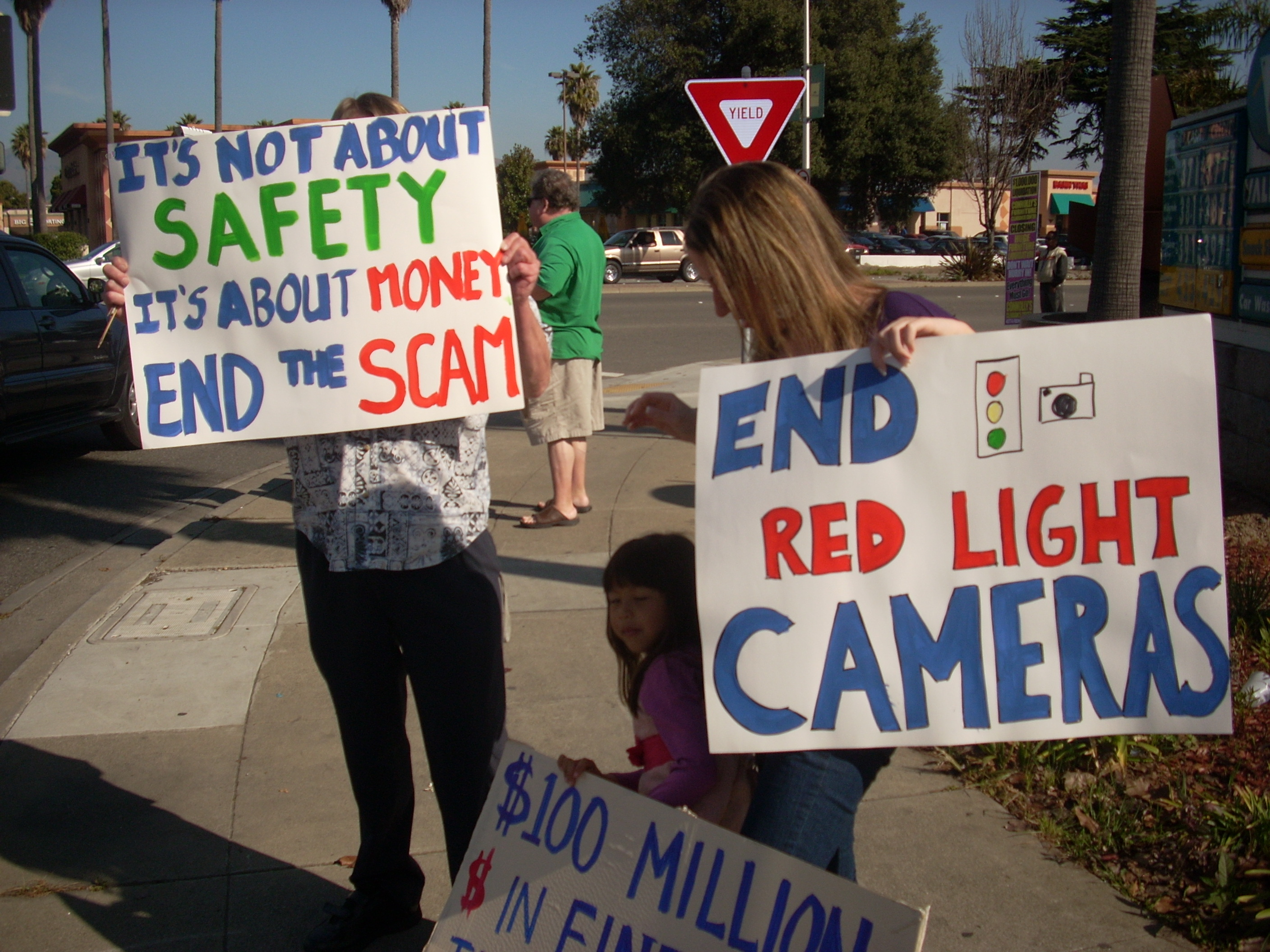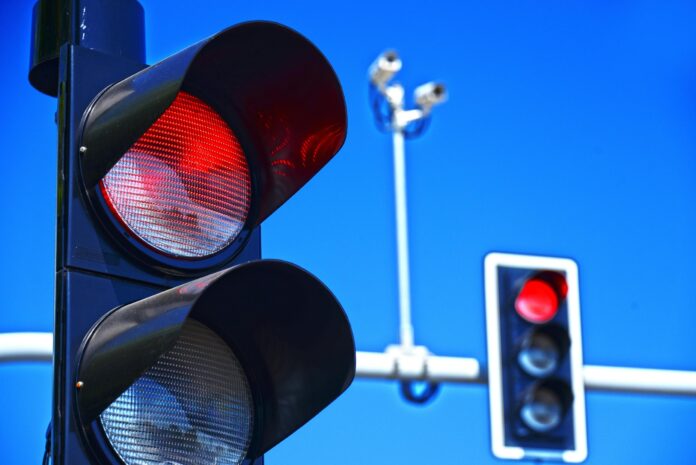Automated Motor Vehicle Ticketing Machines Short-Change Drivers
The use of red-light cameras has become a major revenue source for municipal and state governments, but although these automated ticketing machines are marketed and sold under the pretense of protecting the publics safety, their main purpose is to make money from motorists, which is then passed out to politicians.

Courts across the country have ruled the camera systems to be both legal and illegal, so the debate continues over their constitutionality, but before the Supreme Court weighs-in, the companies who operate the camera systems and the cities which incorporate them into their road safety programs will continue to reap huge financial rewards at the expense of unsuspecting drivers.
Red-light cameras are purportedly used to enforce traffic laws and to increase driver safety by automatically photographing and ticketing vehicles that run red lights or fail to come to a complete stop before turning at an intersection. Sophisticated cameras and sensors automatically issue electronic tickets whenever the automated ticketing machines determine that an infraction occurred.

Municipalities have a large financial interest in issuing red-light traffic citations. It’s a profit center that keeps on getting more profitable for those in the red-light camera industry, and their partners. There is such a high financial interest to get drivers to bust through red-light camera intersections that it’s hard to believe drivers can get a fair and impartial hearing from the city employees who preside as local hearing officers over the red-light camera cases.
Public service agencies have spoken-out against the red-light cameras but lawmakers failed to hear their warnings. The Automobile Association of America (AAA) fought against the passage of Florida’s red-light camera laws, stating that the use of red-light cameras was primarily for raising money for the state and local government. AAA also affirmed their belief that red-light cameras would not increase road safety. The National Motorists Association opposes red light cameras on the grounds that they violate privacy and that they do not increase safety, and studies by the U.S. Federal Highway Administration indicate that red light cameras increase the number of rear-end collisions. Most of these pleas to stop the proliferation of ticketing cameras will never be heard over the powerful lobbying efforts and advertising resources of the red-light camera industry. Florida drivers will pay the price.
A fine of $158 is levied against motorists who fail to come to a complete stop before a turn or when they pass through a red light. $75 of that fine will go to the city in which the violation occurred, $70 will be distributed to the Florida General Revenue Fund, $10 will be distributed to the Department of Health Emergency Medical Services Trust and $3 is distributed to the Miami Project To Cure Paralysis. Each city independently negotiates an agreement with a camera supplier to determine how much of the city’s ticket revenues will be split with the vendor. The average split for camera vendors is 52%, but some Florida cities pay up to 84% of ticket proceeds to the red-light camera companies.
In addition to the $75 each city will get per red-light camera ticket, a new provision in a recently passed Florida transportation bill allows municipalities to charge an extra administration fee, on top of each ticket, up to $250 – for a total fine of $408 per red-light camera infraction.

The passage of House Bill 7125 and other modified transportation bills, have changed Florida’s red-light camera laws to mainly benefit the red-light camera industry. New changes to Florida law now allow notification of a red-light traffic ticket to be given to motorists by regular mail, as opposed to the previous requirement of motorists being sent notifications by registered mail. A driver who has not paid an automated ticket will not be allowed to renew their car registration with the Department of Motor Vehicles, until the fine has been paid, even if the “violator” was never notified.
The new “notification” law will cause many more Florida residents, and visitors, to lose their ability to drive due to non-payment of a ticket they might not have ever known they received.
A few other changes to Florida transportation laws aim to prevent a few of the abuses and manipulations that some camera vendors and city governments have incorporated into the ticketing systems, like the right-on-red turn stop-line “gotcha” tickets that have unfairly picked the pockets of Florida drivers for years, by ticketing drivers who stop before turning right on a red-light but fail to stop in front of a designated point on the road that is sometimes difficult to read, not marked or hidden from view. The right on red violations count for the majority of all red-light camera citations, and revenues.
Another change to Florida’s transportation law states that formal rules of evidence do not apply to red-light camera cases, anymore. Eliminating formal rules of evidence will make it nearly impossible to defend against an unjust citation by eliminating the possibility of defendants proving that cameras are not timed correctly or working properly, which is a common occurrence with red-light cameras, and precisely why the new provisions have been incorporated into Florida law, by camera industry lobbyists.
Tampering With Time
Time is valuable, especially when it comes to red-light cameras and the yellow light signal intervals between stop and go lights. The purpose of the yellow light signal is “to provide a safe transition between two conflicting traffic signal phases,” but in 2011, another slight tweak to Florida’s driving laws allowed city governments to reduce the length of the yellow light, which dramatically increases the number of tickets that are issued, and also increases the possibility of traffic accidents. Somehow this is all done in the name of safety.
Prior to the transportation laws being changed, Red-light traffic infractions were based on the posted speed limit at an intersection OR the average speed of drivers, whichever was GREATER. The 2011 transportation bill eliminated the “whichever is greater” clause, which then gave Florida cities the ability to independently reduce the time on yellow light signals, which has caused more tickets to be issued, more revenues to be collected by city governments from their residents, more driving hassles for motorists – and more accidents.
Lawmakers have apparently done this for the publics benefit, but it’s hard to see how anyone benefits but politicians and ticketing vendors.
Jim Walker, from the National Motorists Association, reported to lawmakers that lengthening yellow signal times reduces red-light running incidents up to 90 percent and that studies have shown that 38% of violations occur within 0.25 seconds of the light turning red and 79% within one second. Adding 1 second to a yellow light signal would improve safety and protect Florida drivers from thousands of onerous, unnecessary and costly traffic citations, but Florida officials are quietly reducing the yellow light intervals, in an apparent effort to trap drivers into getting more tickets.
The Florida Department of Transportation claimed a mistake was made by state employees after is was revealed that the state’s transportation department issued a letter to all Florida municipalities that instructed them to reduce the time of yellow lights from 4.5 seconds to 4.3 seconds, thereby increasing the number of tickets that would be issued and also increasing the likelihood of rear-end collisions.
Both Ohio and Georgia have introduced regulations that would require at least one second be added to the yellow signal time of any intersection that has a red light camera. Adding the one second lag onto the yellow light timing has reduced the amount of tickets being issued in Ohio and Georgia by 80%.
Many cities across America have reduced the time between traffic signals where red-light cameras have been installed, to below the legal requirements, to increase revenues. In California, over 7,000 red-light camera tickets were refunded or dismissed in Bakersfield, Costa Mesa, East LA, San Carlos, and Union City, because the yellow light signals were calibrated to short-change drivers.
The red light camera companies are expected to make over $120 million in 2013 from Florida municipalities. They provide political donations, talking points, advertising material and the justification for the red-light ticketing programs, which city governments use to promote the system to the public and convince their constituents that the cameras are being used for public safety.
A quick Google search for a few sentences from a red-light camera company manufacturer website reveals how many cities are using the same red-light camera propaganda on government websites. The municipalities of Melbourne, FL, Johnson City TN, Newark, NJ, Oak Forest IL, Edgewood, FL, Maitland, FL, South Holland, IL, Cedar Rapids, IA, Stratford, NJ, Cherry Hill, NY, Palm Bay, FL and many more cities throughout the United States have additionally added red-light camera industry talking-points into their governmental websites, in an effort to help justify the automated ticketing systems, and the money they collect from local drivers.
Many other safety measure could be implemented at red-light intersections that would increase safety, without imposing unnecessary costs and burdens on the public. These solutions include painting roadway markings to indicate when to stop, re-timing lights so drivers have less incidents of stopping, increase the time of yellow light signals, implement an all red light phase, in addition to other cost-effective traffic engineering safety countermeasures that don’t cost motorists their time, money or patience.
